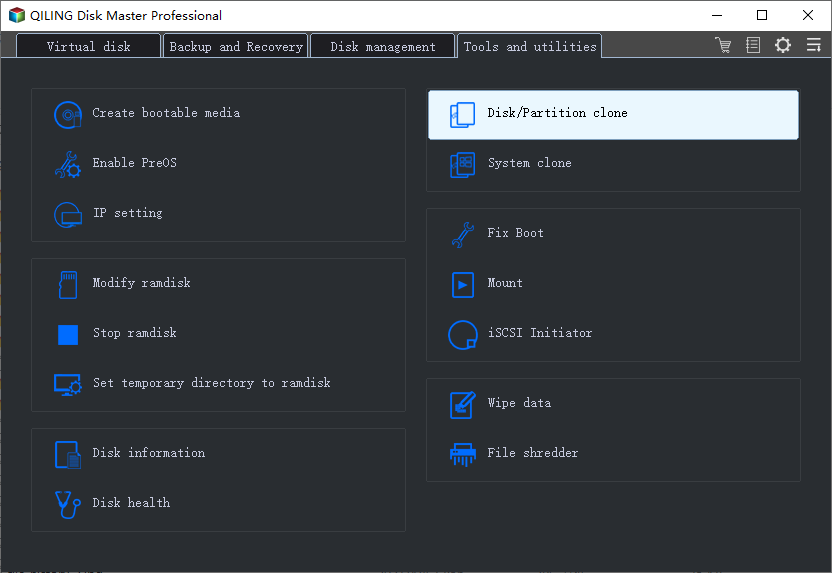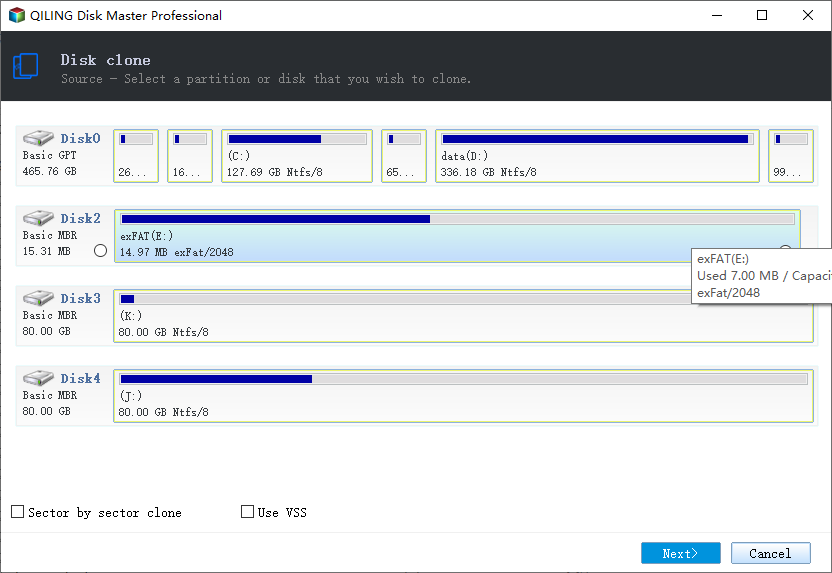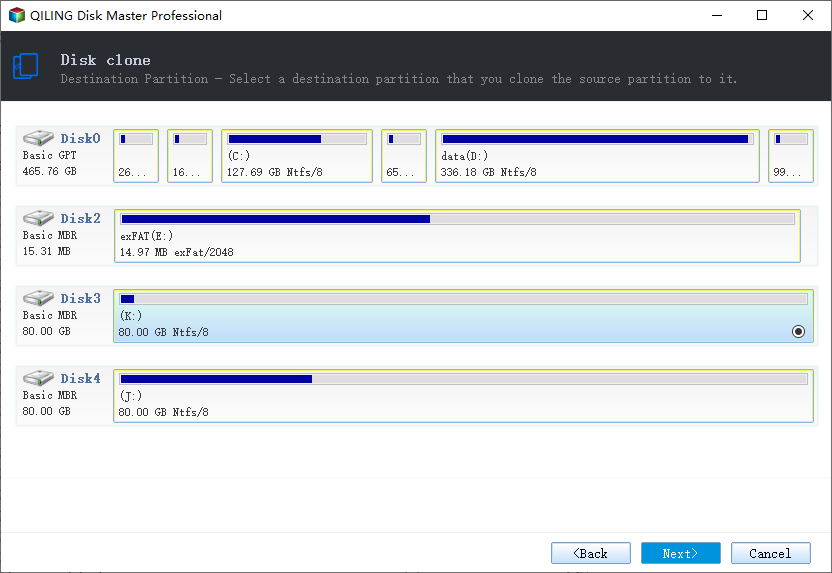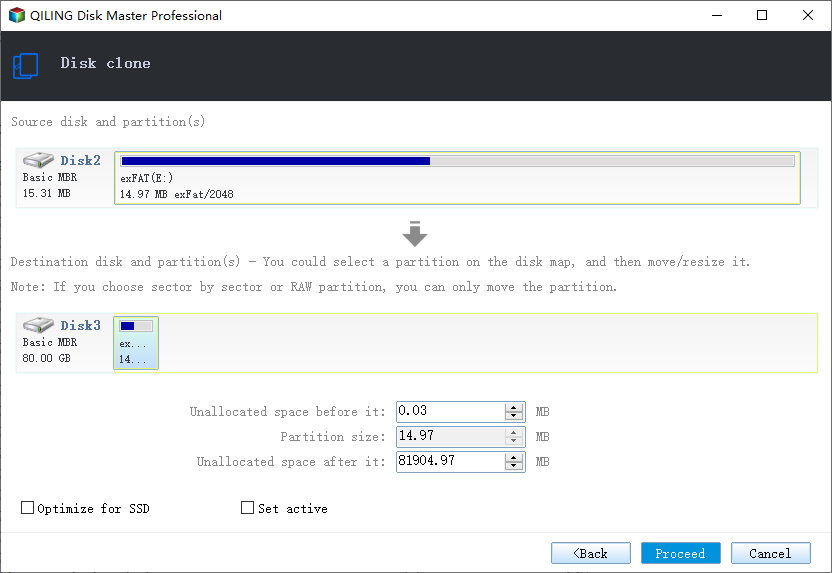How to Clone Windows OS from HDD/SSD to M.2 SSD
Steps to clone SSD to M.2
- 1. Install M.2 SSD or NVMe M.2 SSD on Your Computer
- 2. Start Windows 10 from the Source/Original SSD
- 3. Free Download Disk Cloning Software to Clone Hard Drive to M.2
- 4. Clone SSD to M.2 SSD with Step by Step
- 5. Set Your Computer Boot from Cloned M.2 SSD/NVMe M.2 SSD
Transfer OS from SSD to M.2 SSD Problem
I'm looking for a way to clone my 1TB SSD to a new M.2 drive, but I've heard that it's not possible to clone directly from a 2.5" SSD to an M.2 drive.
To clone your Windows 10 from a 500GB Samsung 840 Evo SATA SSD to a 1TB Samsung 961 M.2 SSD, you can use a cloning software like Acronis True Image or EaseUS Todo Backup. These tools will create a sector-by-sector copy of your original drive, preserving all applications, settings, and licenses. Simply connect both SSDs to your system, run the cloning software, and follow the on-screen instructions to complete the process. This will ensure a seamless transfer of your Windows 10 installation and all associated data to the larger M.2 SSD.
If you need to upgrade your storage drive and don't know how to clone your existing HDD or SSD to a new M.2 or NVMe M.2 SSD, we've got you covered. This article will guide you through the process of cloning your HDD/SSD to a M.2 SSD using professional disk cloning software.
If you clone Windows 10 to an M.2 SSD, you'll also need to know how to boot your computer from the cloned M.2 SSD, which requires additional steps to be taken.
How to Clone SSD to M.2 SSD/ NVMe M.2 SSD in Windows 10
M.2 SSDs, especially those with NVMe protocol, significantly outperform regular solid-state drives. For instance, Samsung's SM960/961 model boasts a remarkable reading speed of up to 3200MB/S, which is roughly 6 times faster than a standard SSD. This makes M.2 and NVMe M.2 SSDs an attractive upgrade option for users who frequently transfer large files or require high-performance operations.
To clone an HDD/SSD to an M.2 SSD, follow these five steps: First, prepare the M.2 SSD by formatting it and installing the necessary drivers.
1. Install M.2 SSD or NVMe M.2 SSD on Your Computer
To install a new NVMe SSD, turn off the laptop, disconnect the power cable and any other cables, unscrew the back panel, and remove it to access the M.2 slot on the motherboard, where you can properly install the new SSD.
If your computer doesn't detect the newly added M.2 SSD, resolve the issue promptly. The SSD should be detected by your computer, and if it's not, take action to fix the problem in a timely manner.
2. Start Windows 10 from the Source/Original SSD
After connecting an M.2 SSD to a computer, it won't boot from the empty new M.2 SSD, but if both the original SSD and M.2 SSD are connected to another computer, it may start from the blank M.2 SSD and fail to boot.
To prevent this startup issue, check the BIOS settings to ensure your computer is booting from the original SSD.
3. Free Download Disk Cloning Software to Clone Hard Drive to M.2
Cloning a disk can save you from the hassle of reinstalling Windows and applications by duplicating the contents of one disk to another, making it ideal for upgrading disks, migrating systems, transferring data, backing up files, or other purposes. Whether you're cloning a system disk with Windows OS or a data disk to an M.2 SSD, this process can help you achieve your goals with minimal effort.
Qiling Disk Copy has a powerful cloning capacity and advanced, flexible cloning features, allowing for easy cloning of SSD to M.2 SSD without the common issue of cloned HDDs not booting, a problem often encountered with other disk cloning tools.
Disk Copy Highlights:
- Easy and fast cloning process
- Clone a hard drive with bad sectors
- Professional technical support
- Compatible with Windows 10/8.1/8/7
4. Clone SSD to M.2 SSD with Step by Step
Activate this software, and follow these steps to clone a hard drive to M.2 SSD.
Prior Notice:
- The "Sector by sector copy" option requires the destination disk to be at least as large as the source disk, making it unsuitable for cloning a larger disk to a smaller one. If you want to clone a larger disk to a smaller one, this feature should be left unchecked.
- All data on the destination disk will be completely erased, so take care.
Step 1. On Qiling Disk Copy, click "Disk/Partition clone" to start cloning.

Step 2. Select this disk as the source disk that you want to clone and click "Next".

Step 3. Choose the other disk as the destination disk.

Step 4. Check the disk layout of the destination disks by dragging the left or right border of the partition to manage the layout.

- Sector by sector clone: The "Copy as source" option allows you to replicate the exact partition layout from the source disk to the destination disk. This means that the same configuration of partitions, including their sizes and types, will be duplicated on the target disk.
- Edit disk layout allows you to manually resize or move partition layout on the destination disk.
- If your destination disk is an SSD drive, make sure to select the "Optimize for SSD" option when the target is SSD.
Step 5: Click "Proceed" to start the hard drive cloning process.
A message now appears, warning you that data will be lost. Please confirm this message by clicking "OK".
5. Set Your Computer Boot from Cloned M.2 SSD/NVMe M.2 SSD
When cloning Windows 10 from an SSD/HDD to an M.2 SSD, you'll need to manually set the boot sequence. To do this, restart your computer and press F2, Esc, or F8 to enter the BIOS settings. From there, set the computer to boot from the cloned M.2 SSD. You may also need to disable Secure Boot Control to see the M.2 SSD as a bootable drive.
Tip
If a source HDD or SSD is in MBR boot mode but the cloned/migrated SSD is in GPT, it's necessary to set the SSD as the first boot device in BIOS and change the boot mode to EFI to ensure proper startup.
If your laptop boots as usual and you see all of your programs and settings just the way they were before (except much faster), all went well.
Additional Information About M.2 SSD
M.2 SSDs are used in small form factor storage expansion cards, enabling high-performance storage in thin, power-constrained devices like ultrabooks and tablets. They support multiple protocols and applications, including Wi-Fi, USB, PCIe, and SATA.
Pros:
- Takes up less space and uses much less power
- Can read and write at much faster rates
- Supports PCIe, SATA, USB 3.0, Bluetooth, and Wi-Fi
Cons:
- 1 TB SATA SSD can cost about $100 (expensive)
- Limited capacity (Maximum 2 TB)
If your laptop is M.2 compatible, it should already have the necessary drivers to install the SSD, so you can enjoy its high performance. If not, it's not worth buying. If it does, you're good to go.
Conclusion
If you want to clone an SSD or HDD to an M.2 or M.2 NVMe SSD using Qiling Disk Copy, follow these steps. However, if you encounter issues such as the cloned SSD not being recognized as a boot drive or not booting properly, please contact our technical support team at support@idiskhome.com for assistance.
Related Articles
- How to Clone a Failing Hard Drive in Windows 10 Without Data Loss
- Best Bad Sector Repair Solutions to Check and Remove Bad Sectors on Hard Disk
- How to Replace/Upgrade Laptop HDD with an SSD
- How to Clone Failing Hard Drive to External Hard Drive in Windows 10/8/7